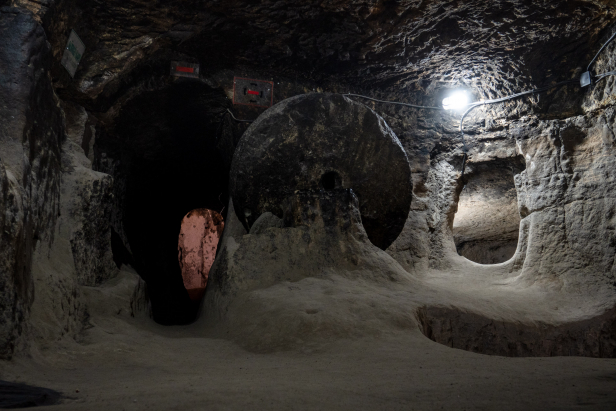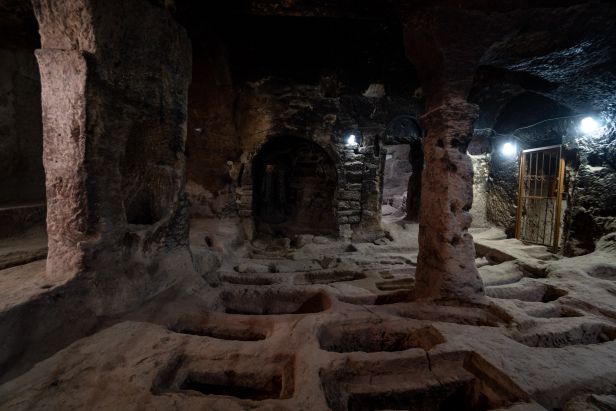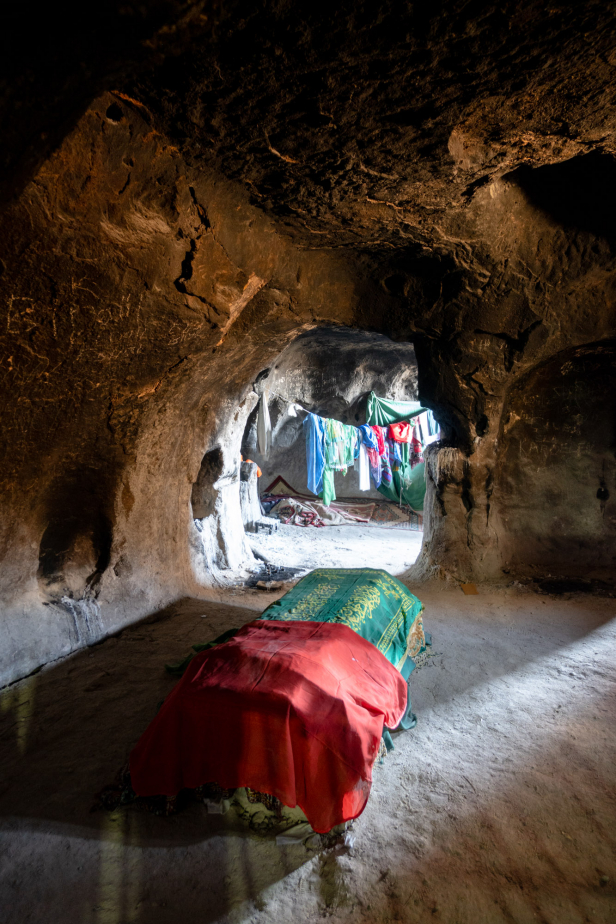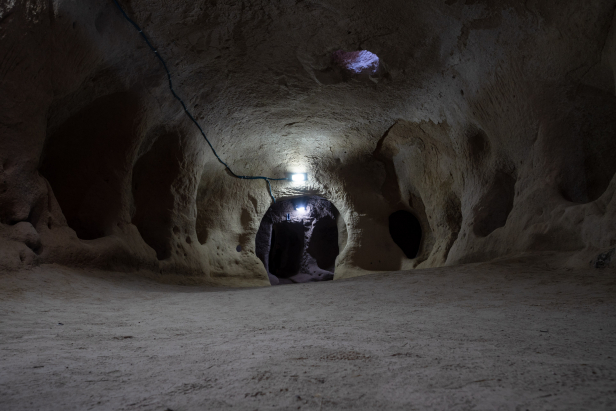The Underground Cities of Saratlı: St Mercurius and Kırkgöz
Saratlı Yeraltı Şehirleri: Aziz Mercurius ve Kırkgöz
/ By Josh
Cost: 25 TL Each
Great for: Cappadocia, Cave Church, Cappadocian Greek History, Orthodox Church, Double Troglodytes
A quiet village of Aksaray Province, the village of Saratlı has become a popular destination since a pair of underground cities were uncovered beneath the historic homes and barns. Saratlı sits on a pair of low rocky hills with an underground city under each of them. The high ground and hard stone made for an ideal building site and the perfect place to carve out a city below the surface.
Subscribe to The Art of Wayfaring
The exact origin of the underground cities here in Saratlı are unknown and it is difficult to say anything about their earliest beginnings as later cave construction and expansion would destroy the older. While we know little about St Mercurius and Kırkgöz Underground Cities in particular, many of Cappadocia’s cave cities follow the same rough timeline.
That timeline begins with the eruption of the nearby volcano, Mount Hasan, which blanketed the region in a layer of ash. The ash cooled and hardened into layers of soft stone and while this eroded into fantastical shapes in regions like Göreme, it remained a relatively flat sheet here around Saratlı.
Sometime in the Bronze Age the inhabitants of the region began carving out rooms near the surface, often used as storage rooms or barns. Over time these simple carved spaces grew in size and complexity with the largest of them able to house thousands. In the 4th century the Persians, who had conquered the region, noted the unusual practice of carving out cave cities.

The advantages of such cities were many. During the extreme heat of summer or the freezing temperatures of winter, the temperature in the caves stayed relatively constant. It was also a brilliant form of defense in a landscape that offered little protection. The underground networks were a safe haven for locals fleeing raids. Tunnel entrances, air shafts, and chimneys could easily be disguised amid the cluster of the village structures. Tunnels could be sealed up with heavy stone doors and even booby trapped.
In the early centuries of Christianity’s spread throughout the Roman world, Christians would face periods of intense persecution making the hidden cities of Cappadocia an ideal refuge. Centuries after the Christianization of the Roman Empire the Christian population again took to using the hidden cities as refuge as Arabs invaded the region beginning in the 7th century. Continuing waves of raids made these underground cities a necessity. From the 11th century onward the Greek speaking Christians of this area lived under Muslim rule, beginning with the Seljuks then on down to the Ottomans. During this time locals again took to their hidden shelters as defense in periods of instability or persecution.
Why Visit?
St Mercurius Underground City
The St Mercurius Underground City can be found on the northern hill of Saratlı. The name of this city comes from the church within the cave city named for St Mercurius, a local Cappadocian and martyr. Mercurius, whose real name was Philopater (meaning “Lover of the Father”), was born in Cappadocia (though some traditions say Rome) and served as a soldier. When he refused to thank the Roman gods for a victory, he was arrested and tortured then sent to Caesarea (Kayseri) where he was beheaded.

The St Mercurius Church is fairly large for an underground city church. It has three apses and a pair of pillars supporting the roof. There are thirty-seven graves carved into the floor of the church.
While it is believed that there are as many as seven levels of carved chambers and tunnels, only three have been opened to the public. Within these three levels you’ll find all the hallmarks of a Cappadocian underground city with great mill-stone doors, wells, air shafts, ovens, and claustrophobic stairways.
Subscribe to The Art of Wayfaring
Kırkgöz Underground City
The Kırkgöz Underground City can be found on the southern hill of the village of Saratlı. The name Kırkgöz, meaning “Forty Eyes” is likely a reference to the city’s many dark, eye-like openings, in the hillside. Though lacking a church, the Kırkgöz Underground City has all the other sights and attractions of a Cappadocian underground city as well as a tomb to an Islamic saint found near the exit.

How To Get There
Car
The village of Saratlı is just 3 kilometers south of the D300 (Aksaray – Nevşehir) highway that connects the cities of Konya, Aksaray, and Nevşehir with Cappadocia’s heart in Göreme National Park. Saratlı is 25 kilometers from Aksaray and 50 kms from Nevşehir. Signage is good and clear. Finding the right entrance to the St Mercurius Underground city in the village of Saratlı is perhaps the greatest challenge. Continue past the much-easier-to-find exit, and another 200 meters later you’ll find the entrance on your left behind a small, treed park.
For more about car rental and driving in Turkey make sure to read our full drivers guide.
Public Transport
Public transit connects Saratlı with the city of Aksaray. If you hope to take public transit from another city you will likely need to pass through Aksaray or take a bus from Nevşehir towards Aksaray and get off on the highway at the Saratlı turnoff. From here you can walk or hitchhike the remaining distance. In high season there are regular tour busses running from Nevşehir and Göreme to Saratlı and arranging a ride through one of the tour operators is also an option even if you’re not a part of a large tour group.
Where To Stay
Saratlı is a small village with only a couple possible hotels. We didn’t notice them when we visited and they have no pictures or reviews on Google maps so their existence is somewhat questionable. Should these prove to be fake, the city of Aksaray has a number of hotels to choose from. The town of Güzelyurt is home to some beautiful Cappadocian sights as well as a handful of hotels. This area is very tourist friendly and camping in a secluded little patch of land is always an option, just make sure to clear it with the owner first.
Other Tips
Planning on visiting the Underground cities of Saratlı? Make sure to check out the many other sights ad experiences that the Province of Aksaray has to offer or take a look at our other Cappadocia guides!
Subscribe to The Art of Wayfaring
Have any tips or info to add? Spot any mistakes? We’d love to hear about it.
